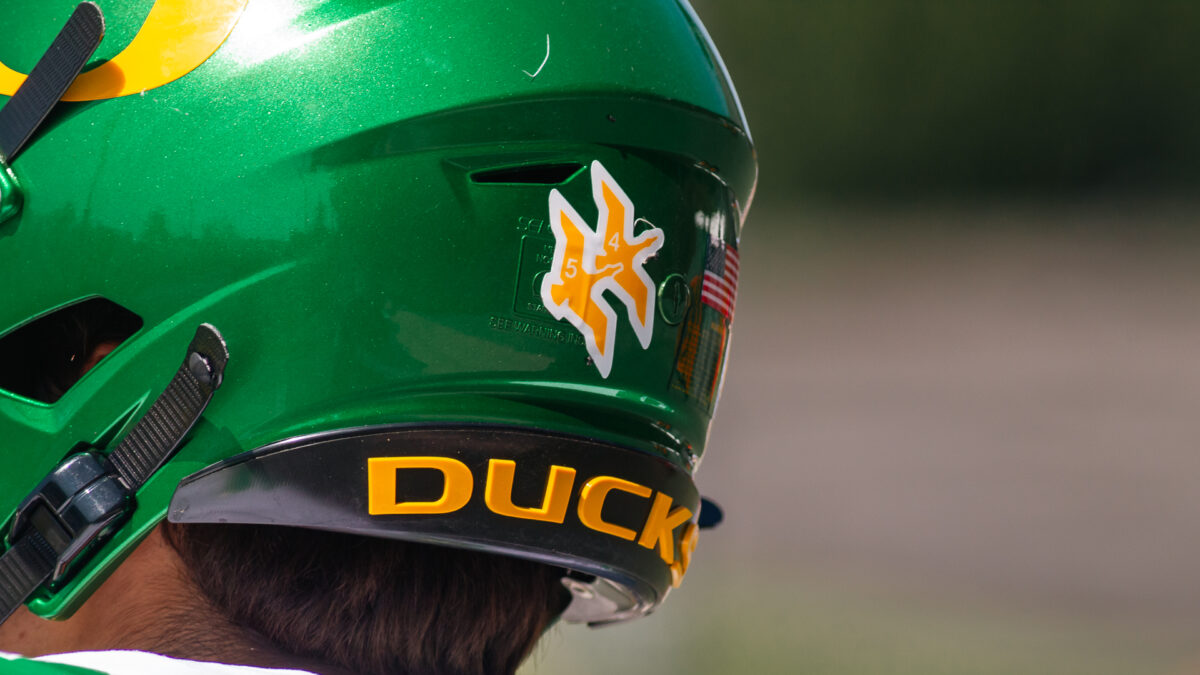College football has been an ever-changing entity for the past several decades, but never more so than over the past five years.
While things like the transfer portal, name, image, and likeness, and conference realignment may garner most of the headlines, one of the most recent changes that we expect to see this fall could be among the biggest game-changers of all.
In-helmet communication has been approved in the FBS, and when it comes to gameplay, this could potentially make a massive difference.
No longer will offenses and defenses be forced to spend valuable pre-snap seconds looking over to the coaches on the sidelines while their plays get signaled in. Now, one player on offense and one player on defense — typically the quarterback and a linebacker — will be designated with a green dot on their helmet, and have communication with a coach through an earpiece up until there are 15 seconds left on the play clock.
[lawrence-related id=64309]
For Oregon Ducks offensive coordinator Will Stein, this has allowed him to have more of an impact on the offense, dictating plays, audibles, and checks to his signal-caller all in real-time.
So far through spring and fall camp, Stein has been enjoying the process of adapting to the new system. Of course, he also has had to work on condensing the flow of information, and not putting too much on the QB’s plate.
“You don’t want to talk too much because it can just become white noise for the QB,” Stein said on Monday after practice. “But giving them specific things within the play of ‘Hey, if we get this, check to that.’ That also helps as well.”
The new rule was passed back in the spring of 2024, so Oregon got to try things out during the spring football season and get their feet wet with the technology. Now that they’re deep into fall camp, it’s starting to feel more natural for coaches and players.
Somewhat.
“It feels like you’re in a movie,” sophomore QB Dante Moore said of the green dot.”Just hearing what Coach Stein is thinking before he calls a play and helps us out with protections, or helps us out with checking plays. But overall, as a kid you’ve always watched documentaries of some NFL quarterbacks in the huddle, taking control of the huddle, hearing the play call.”
[lawrence-related id=64303]
While getting the process of calling an offense through a speaker may have taken some time, and getting used to the new intricacies of the communication had its learning curves, up next for Stein is learning how his quarterbacks differ when it comes to pre-snap communication.
Bo Nix was such a detail-oriented player that he liked to check everything at the line of scrimmage and change plays when he felt necessary. So will Dillon Gabriel or Dante Moore be the same way?
“I think there’s a fine line because you’ve got to find what the quarterback likes,” Stein said. “Does he want a lot of communication or not a lot? It just depends on the guy, but it’s been really smooth this fall camp.”
[lawrence-related id=64297]
In reality, we won’t see a massive difference this fall when watching the offense operate on the field. The coach will get the play call in from the sideline, and the QB will get his players in position before the snap.
But make no mistake, thanks to the new green dot, the whole world has opened up for Stein and his offense.
[lawrence-auto-related count=3]
